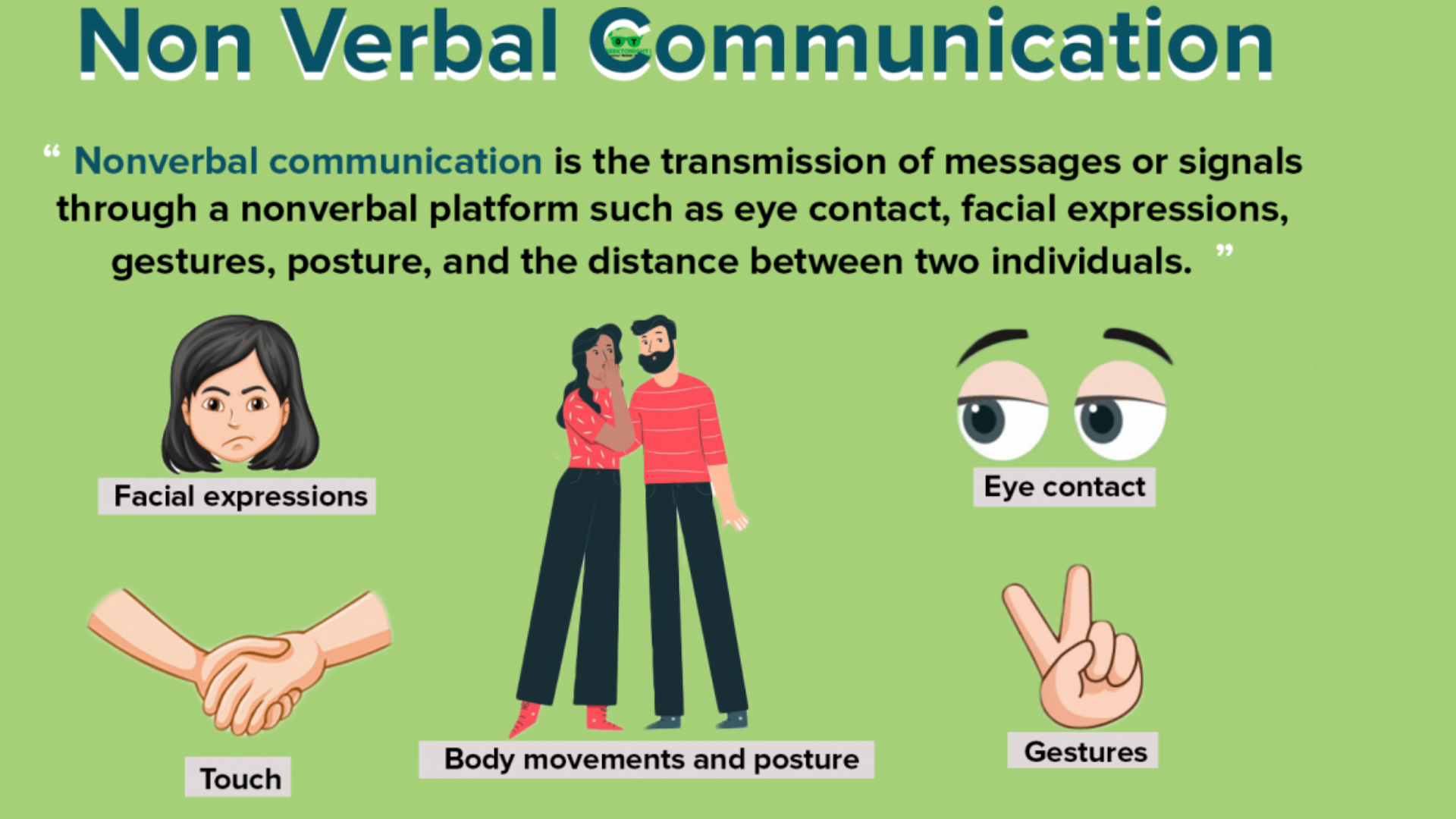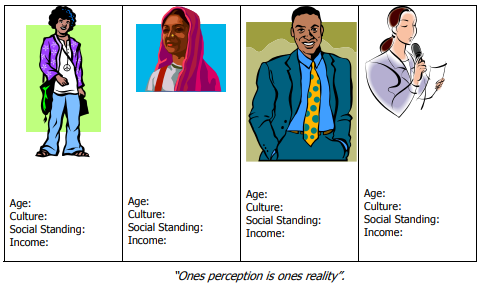Every time we speak, our voice reveals our gender, age, geographic background, and level of education, native birth, emotional state, and our relationship with the person spoken to. Other people can read these cues accurately. We send important information about ourselves; when we listen to others, we can receive important information about others. In this lesson you will look at using the qualities of your voice to identify the emotional state or feelings of the speaker and to use your voice to respond appropriately.

Forms of Communication - Speech and Language
Language helps us to make ourselves understood through using a united system of words. We take our language for granted until we suddenly cannot find the right words to explain ourselves, or when someone asks us to explain what we mean. Have you ever tried explaining yourself to someone who is not a first language speaker of your language? It is much easier to be misunderstood. Even when you are not speaking out loud, you are using language to think and create meaning. We call this intra-personal communication. i.e. interpersonal communication happens between you and others, and intra-personal communication happens within yourself.
Speech and language includes but is not limited to:
- Verbal or spoken communication
- Written communication
- Art, e.g. poetry, music, literature
Non-Verbal
The term “nonverbal communication: is used when we refer to communication that is not written or spoken. Researchers have found that when we interact with each other, we interpret more meaning through non-verbal behaviour than through the verbal message. In fact, they claim that as much as 65% of the meaning is understood though non-verbal communication.
Body Movement, Posture and Gestures

Body movements are strong indicators of how you feel. You can tell how your boss is feeling sometimes just by the way she is walking! Some people walk as if they are in a daze (research tell us that those are the ones who are likely to get mugged first – they are communicating: “come and get me!”), others walk with purpose. Sometimes you can see if a person is feeling dejected (sad) by the way they walk.
Your posture can also communicate a lot about your personality, your status, how you are feeling today, your self-image, and your gender. Have you ever noticed how a tall person who is uncomfortable with being tall may slouch their shoulders, whilst some 6-foot models “strut their stuff” on the cat walk? Do you see how this shows a difference in their self-image? But remember, a slouch may just be a temporary indication of a person’s emotional state for the day – perhaps they only feel dejected now, and will bounce back when they have overcome their emotional hurdle. We must be careful not to generalise our interpretations. Gestures are movements of hands, arms, legs and feet. Hand gestures commonly describe or emphasise verbal descriptions or communicate attitudes.
Facial Expressions and Eye Contact
Facial expressions are said to communicate how we are feeling and our reactions to the messages we are receiving. These are generally the real sign to how strongly we feel about the message we have received. Have you ever received unwelcome news, and you did not want to show people your reaction, but your face and eyes gave you away? After all it is said that “the eyes are the mirror of the soul”.
The way we use our eyes is also a way of interpreting meaning. Who will be viewed as more confident?
a) A public speaker who does not look at her audience or
b) A public speaker who looks up during her speech?
I am sure you answered (b). Sometimes, if someone is not being truthful they cannot look you in the eye. Can you think of other instances when people do not maintain eye contact?
Perhaps you are aware that in some African cultures, it is respectful to drop your head in conversation with a superior. Or did you think of someone who is distracted or bored? They will find it very difficult to maintain eye contact if they are not concentrating on what you are saying or the presentation at hand. Share any additional ideas with your fellow learners.
Use of Space
People convey messages about themselves by using space. Consider for example whether a new student decides to sit in the back or front of the class, or if a staff member sits far from the head of a table or at the head of a table during a meeting. Most teachers will tell you that the mischief-makers will sit at the back of the class and the more serious students choose a position near the front
Use of Touch
Use of touch can also communicate the nature of the relationship between people.
Beware that touching behaviour is different for people of different cultures, but we also need to be very aware of what makes other people uncomfortable and what is inappropriate. Also find out what touching behaviour could be understood as sexual harassment.
Use of Time
People can use other people’s use of time to interpret messages. If someone phoned you at three am, you would probably expect it to be bad news. Similarly, if you do not return a client’s call within a time frame that he thinks is appropriate, he may interpret your non-verbal behaviour as an indication that you do not care about his business. Time is often a reflection of status, the higher your status, the more control you have over time. For example, the executives in your organisation will control how long you will wait for an appointment. Different cultures and personality types view time differently, often resulting in misunderstandings. Organisations therefore need to have company standards for time keeping that everyone adheres to.
Personal Appearance
Personal appearance includes the way you look, including but not limited to:
- the clothes you wear,
- your personal grooming,
- the symbols you wear (badges, tattoos, etc.),
- your sense of style, etc.
and can influence first impressions, job interviews, consumer buying behaviour and even courtroom decisions. Your personal appearance can give away cues about your age gender, identity, personality, attitudes, social standing, and income, to name but a few.
A job seeker looking for a position as a professional in a leading investments company who arrives for an interview wearing jeans and “tekkies”, will probably not get the job, even if he has all the right qualifications and experience because the interviewer may interpret that the candidate is not professional. What do the appearances of the people below communicate to you?
The above saying means that even if someone else’s perception of you is incorrect or unfair, it is real to the person who perceives it. Our role is to manage other people’s perceptions of ourselves. This can be done very much through taking care of our physical appearance, without compromising our unique individuality.
Vocal Qualities
In South Africa we have a variety of accents and ways in which people speak. This adds to the diversity of our nation and we do not want to make everyone a clone of the other. Only when our vocal qualities lead to miscommunication, do we need to work on refining it. We need to use or vocal qualities to enhance the meaning of our message. Therefore, we change our vocal qualities according to our situation:
Volume
Some people speak softer or louder than others. We can increase or decrease the volume of our speech to change our meaning.
- A client will use a louder voice to exclaim his dismay at having his call transferred for a third time.
- A soft voice would be used to show sympathy towards a client who has called in to enquire about benefits after her spouse has passed away.
- You have to speak louder when you are interacting with a client if the air conditioning unit is faulty and making a noise.
- Note: Speaking too loudly in inappropriate situations can be irritating, and interfere with meaning. Speaking too softly can make it difficult for listeners to hear and understand you.
Inflection
Inflection is the rise and fall of the voice. People who do not use inflection in their voices have a monotonous “drone”. However, overusing inflection can create childlike speech. You would typically use more inflection when you are talking about something exciting.
Pitch
When interpreting emotions from the highness or lowness of the voice, we can typically infer a range of emotions from calmness, cosines, lack of interest through to depression from a low-pitched voice. A high pitch can indicate extreme emotions such as fear or excitement. x Resonance This is the quality and fullness of your voice, or how pleasant or unpleasant your voice sounds to the listener.
Rate
Rate refers to the pace of your speech. Speaking quickly usually indicates excitement, anger, volatility, whilst a slower speech would indicate being relaxed, trying to make a point, depression, lack of interest, etc. Note: Speaking too quickly can cause your listeners not to hear all your words, and speaking too slowly can be monotonous and boring for your listeners.
Clarity
Clarity refers to the clearness of your pronunciation. Your accent is acceptable provided that the listener can understand what you are saying. A final note on vocal qualities: For some of these vocal qualities the emotions indicated are very opposite for the same vocal characteristic.


